When to Visit Cao Bang – Vietnam’s Undiscovered Paradise
Vietnam has different weather patterns that stretch from the north to the south. Planning travel accordingly can be quite difficult and time consuming. If Cao Bang is on your itinerary, read this short article to acquaint yourself with the local weather and seasons.
Just a few hours north of Hanoi, the beautiful province of Cao Bang awaits. Hardly known by foreign tourists, Vietnam’s northern-most region is one of tremendous natural beauty. The deep valleys, green hills and pointy limestone karsts make the landscape one you’re likely to remember long after you’ve returned home from your trip to Vietnam.
As with all places, of course the season during which you visit will have a great impact on how your trip goes. Generally, you can travel to Cao Bang any time but knowing what to expect during the various seasons will help you pack and plan your trip to be sure you make the most of visiting one of Vietnam’s most beautiful provinces.
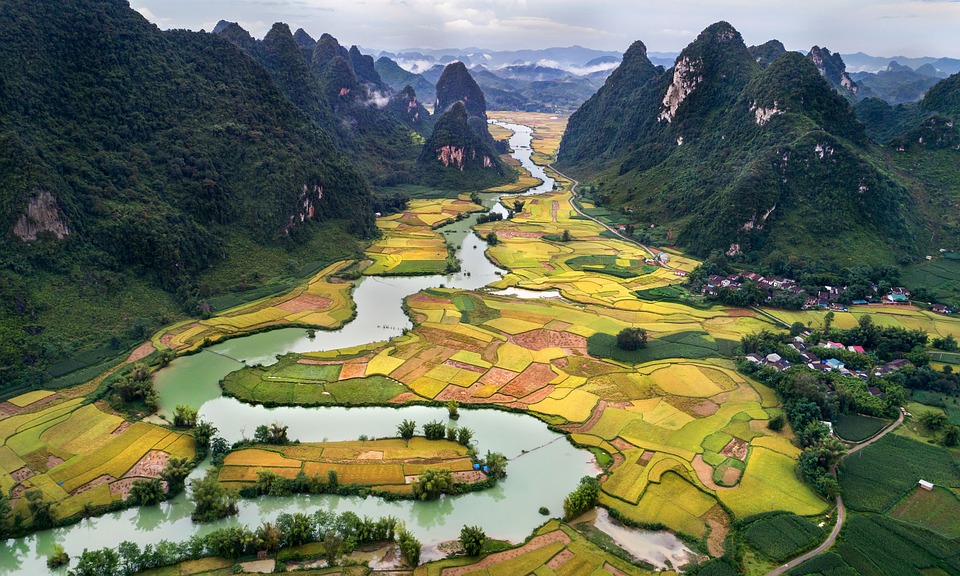
Contents
Cao Bang’s Four Seasons
Spring in Cao Bang – February to March
Spring is a wonderful time to visit Cao Bang. With temperatures reaching the mid to high 20s during the day you’ll be able to enjoy exploring the outdoors without getting too hot. Nights can get a bit chilly with temperatures hitting the low 20s. If you get cold easily, bring a warm sweater to sleep in.
Since there is little chance of rain during this time, you’ll largely be out on dry, safe trails enjoying the region’s beautiful landscape. Springtime is also when many plants come back to life after winter, so you’ll see meadows and forests dotted with the light green of spring.
Cao Bang’s first rice season starts in February, so you’ll likely see farmers out planting rice early in the month. In March, the paddies will be a rich, lush green, giving you a real-life experience of all those photos and postcards that probably inspired you to visit Cao Bang.
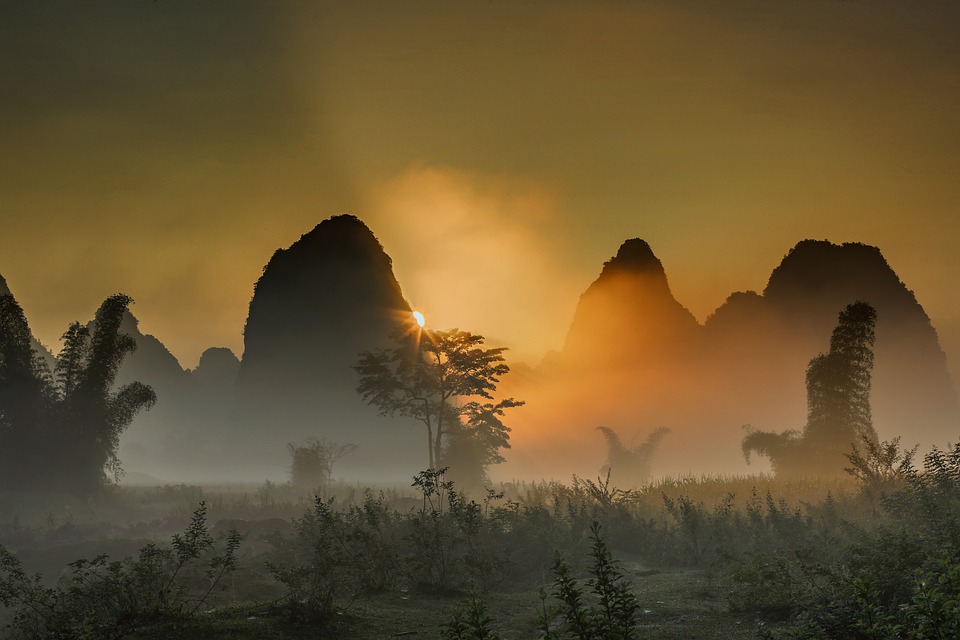
Summer in Cao Bang – April to September
From April, things quickly start to heat up in Cao Bang and temperatures reach the high 20s to mid 30s during the day. The heat paired with the humidity can be quite strenuous on the body if you’re not used to it. Always have enough water with you, try not to overexert yourself and take breaks when you’re tired. Maybe have a nap in one of the famous hammock cafes during the hottest time of day and keep exploring in the afternoon?
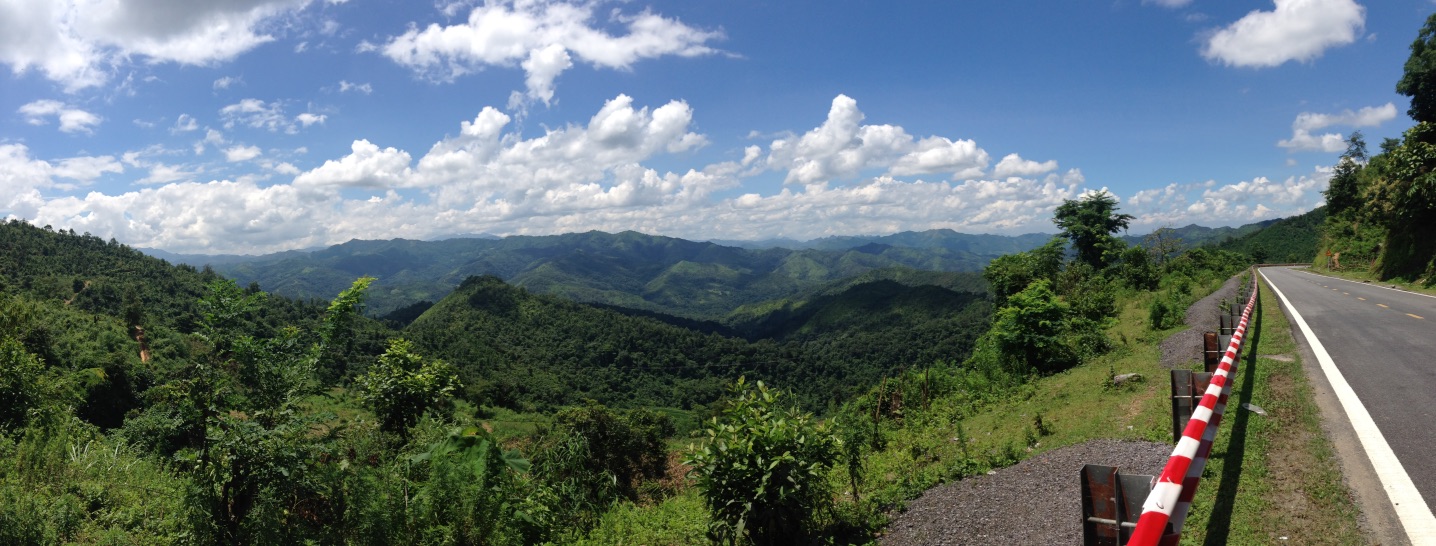
A great way to explore Cao Bang during the hot months is on a motorbike. The wind will help you keep somewhat cool and the views from the bike are amazing. Just picture the golden rice paddies ready for harvest in May and June… Make sure to use a lot of sunscreen or cover up well as hands and legs burn easily while you’re riding your bike.
Towards the end of summer as it starts cooling down a little, Cao Bang’s rainy season starts. This means heavy downpours on an almost daily basis. The good thing is that often the rain only lasts for an hour or two, so you can head back out when the clouds move on. Hiking trails will likely be muddy and slippery though, so keep that in mind when you’re planning your trip.
If you’re in Cao Bang during the rainy season, you must visit the famous Ban Gioc waterfalls. At this time of year, they have the most water and are even more spectacular than the rest of the year. Apart from that, the second rice season starts in July, so you’ll get another chance to witness the planting and irrigation of the paddies.
Autumn in Cao Bang – October to November
Autumn in Cao Bang is when temperatures really start coming down and daily rains make the landscape even lusher and greener (if that’s even possible!). At this time of year, expect temperatures in the mid to high 20s. On cool days you might need a light jacket and a warm sweater for nighttime.
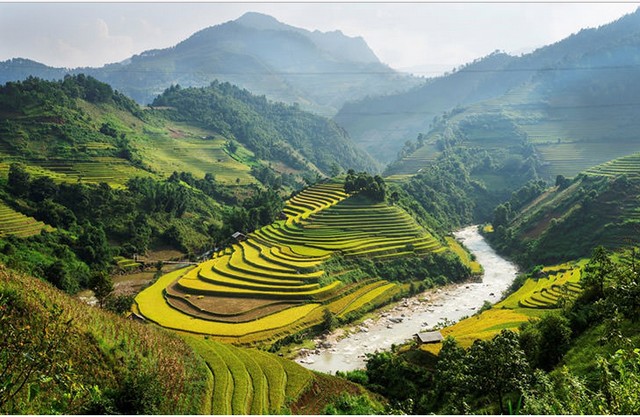
While all the rain might make trekking difficult due to muddy trails, it’s still worth it to explore Cao Bang in autumn as fields and forest will be teeming with wildflowers, even more than during spring. It’s not for nothing that October and November are known as the wildflower season of Cao Bang.
Winter in Cao Bang – December to January
If you’re not afraid of the cold, a winter trip to Cao Bang could be something for you. By now the rains have largely stopped so trekking will be easier, safer and maybe even less strenuous than in summer and autumn. Similar to Sapa, some of Cao Bang’s more mountainous regions get snow every once in a while, so make sure you come prepared!
If you’re planning a motorbike tour during this time, bring a warm jacket, gloves and a scarf with you. Otherwise you risk feeling extremely cold on your bike and you might not be able to enjoy the ride as much.
Come nighttime, you need to be ready for the cold. Temperatures can get close to freezing so a cozy hoody, fluffy pyjama pants and warm socks will be necessary to keep you warm while you sleep.
Gear to bring for exploring Cao Bang
- Use a backpack instead of a suitcase
To make it easier to carry around your stuff, it’s best to use a backpack rather than a suitcase. That way you’ve got your hands free and don’t have to worry about dragging luggage around the rural streets of Cao Bang.
- Sun protection
Sun protection should be at the top of your list no matter where in Vietnam you are going. The best is to buy sunscreen back home as it can be quite pricey here and you might not find the brand you like. Also, most creams tout their whitening capabilities which is not something you want if you’re working on that tan.
If you don’t like the feeling of sticky sunscreen in hot, humid weather, wearable sunscreen is a good option. Light, long pants and full-sleeved shirts will protect you from a sunburn and help keep you cool. It might sound a bit counterintuitive but covering up with thin, sun-blocking material can help protect your body from the heat.
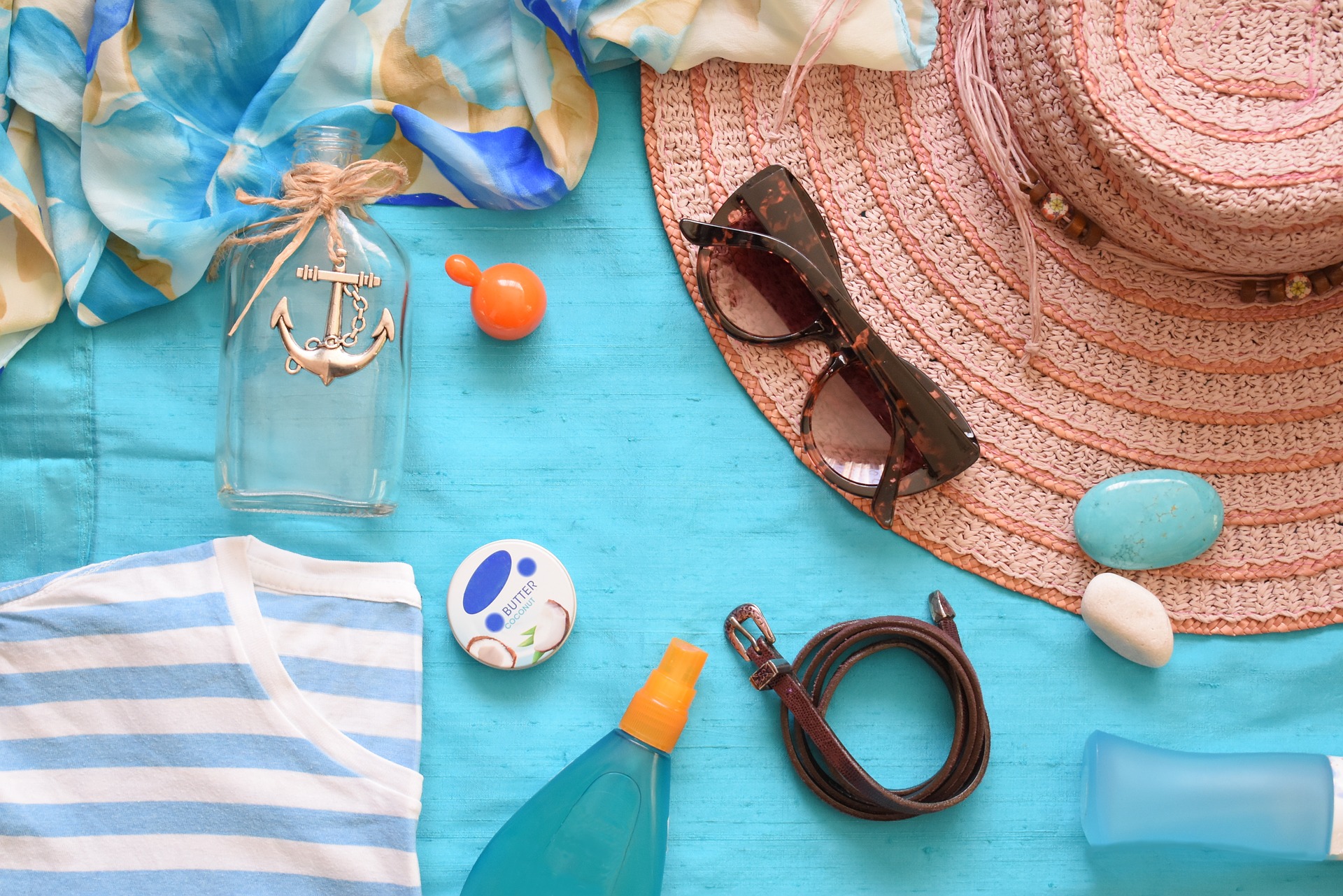
A hat and sunglasses should also find their way into your bag. The glasses will come in handy if you’re going on a motorbike tour and you want to protect your eyes from the sun and wind.
- Insect repellant
If you travel to Cao Bang, you’ll likely be spending a lot of time outside and maybe even in the woods. This means you’re making yourself a great target for mosquitoes and other bugs. Keep a bottle of insect repellant handy and be sure to always sleep under a mosquito net.
Again, if you don’t want to spray your skin, you can wear long pants and full sleeves or get an insect replant designed for clothing instead.
- Rain jacket
No matter when you come to Cao Bang, there’s always a chance of rain. To avoid getting drenched to your bones, carry a light rain jacket you can whip out any time. If you’re using a backpack, don’t forget the water-resistant cover so your stuff doesn’t get wet. For extra safety, store your valuables and electronics in Ziploc bags in your backpack to keep everything dry.
- Warm clothes
Cao Bang can get pretty cold, especially during winter when some of its peaks even get snow. While you might not expect that from Vietnam, you’d better come prepared. Layering usually works best and you can easily shed clothes as temperatures change during the day.
In the winter months, you will need a warm jacket, a scarf and a hat. Gloves can come in handy if you’re riding a motorbike. Some homestays or hostels might also not be as warm as you’d like, so bring something warm and cozy to sleep in during autumn and winter. In spring and summer, a light sweater should be enough for cool evenings and if you easily get cold at night.
- Tried and tested shoes
If you’re heading to Cao Bang, you probably want to go for some treks or explore ethnic minority villages. All that requires a lot of walking so bring shoes you know are comfortable. The last thing you want is sore feet when you know you still have several hours to go before you get to take off your shoes.
- Band-aids
Even with the best of shoes, you might still get a blister or two. Or you could get a couple of scratches will you’re on a hike. Carrying band aids and some antiseptic is the best way to prepare for this. Before you leave home, check at your local drug store if they have specialized blister band aids. Those can be lifesavers and instantly relive the pain of throbbing, angry blisters.
- Power bank
While most homestays will have electricity, you might have to share a limited number of plugs with the residents and your fellow travelers. So all your devices still get charged, consider bringing a power bank. Don’t forget to check your airline’s regulations about power banks though since you’re only allowed to carry them up to a certain size.
- Camera gear
This should be a no-brainer. Cao Bang is so beautiful you’ll probably fill up your memory card on the first day. That’s why it would be smart to bring an extra one and also carry backup batteries.

- Toiletries
Of course, there are stores in Cao Bang’s towns and some homestays might offer toiletries as well, but to be sure there are no surprises and you have the products you want, carrying travel-sized versions of your essentials.
- Medication
Stomach bugs are a reality for many travelers who come to Vietnam, whether it’s their first time or not. That can be because of foods your body isn’t used to, because of the different hygiene standards or simply because you had bad luck.
To be prepared for this undesirable scenario, always keep your Imodium (or whatever you like to use) close. Again, you can get medication in Cao Bang, but trying to find a place which sells products you’re used to and trust is probably not what you want to be doing when your tummy goes on strike. Probiotics are also always a good idea to have!
Here is a more detailed article on what you should pack when visiting Vietnam.
Now that you know what to expect during Cao Bang’s four seasons and how to pack to face the elements in Vietnam’s hidden paradise, you’re ready to plan your trip! Is there anything we forgot to mention, or do you have travel essentials you wouldn’t want to live without? Let us know in the comments below!
Related articles:
Ban Gioc Waterfall & Nguom Ngao Cave – A Precious Gift From Mother Nature
Guide to Northern Vietnam: Hanoi and the Mountains Beyond
If you enjoyed reading this article and would like some more fun info about what to see, do and eat (and a bunch of interesting cafes!) in Vietnam, follow us at the 4U Trip!
